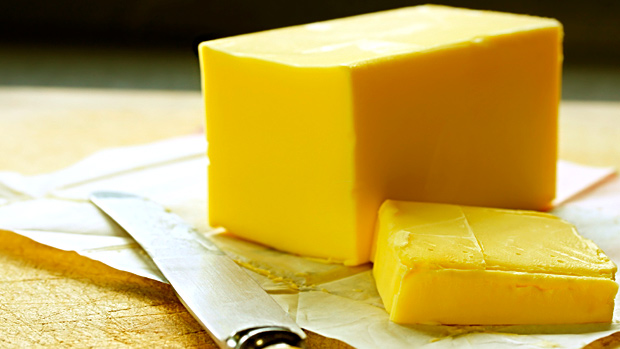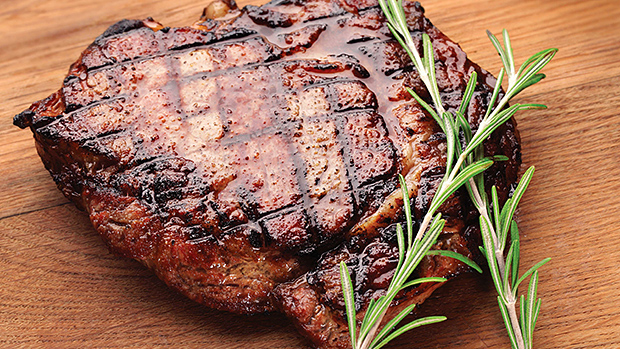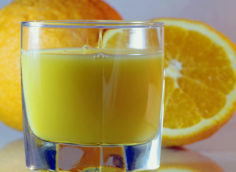Q: Which is better to use butter or margarine? I've heard benefits and downfall of both?
A: This is a great question especially with all the designer margarines that can be found in the supermarkets. First, let's look at what's "wrong" with butter. Butter has been pitted as a bad food in the health and nutrition world for quite some time. But why? It's natural, minimally processed, and tastes great!

Heavenly Taste or Heat Attack Waiting to Happen?
The two strikes against butter are saturated fats and cholesterol (I guess in this case, two strikes and you're out). Everyone's heard all about the studies that show eating lots of saturated fats and increased cholesterol levels (this can be due to high cholesterol intakes) are strong predictors of heart disease risk.
You may be thinking, "That's no problem. I can reduce my saturated fat intake by just having one pat of butter with dinner instead of four." I'm sorry that almost sounded like you were going to use moderation.
Unfortunately most Americans skipped school the day they talked about moderation because trying to instill nutritional moderation (especially regarding saturated fat) to the American population is like trying to teach Mel Gibson to just have one drink.
Since moderation doesn't work, the next tactic is substitution and deception. Enter Margarine. Margarine has less saturated fat than butter, no cholesterol, and it spreads like warm butter right out of the refrigerator.
Talk about a victory for food scientists! Not so fast. Margarine is primarily made from soybean oil (the toilet water of oils), it's hydrogenated (hello trans fats), and it's made from oils that are liquid at room temperature (aren't food scientists great). Not to mention margarine can be more expensive than butter.
The Problem with Soybean Oil & Why It Is Used
When I referred to soybean oil as "the toilet water of oils," it was kind of a hint that I'm not a big fan of soybean oil. Here's why, the chart below compares the fatty acid composition of several popular oils. Keep in mind that according to the United Soybean Board, 80% of the oil consumed in this country is soybean oil.
| Olive Oil | Soybean Oil | Canola Oil | |
| Saturated | 2 | 2 | 1 |
| Mono-unsaturated | 10 | 3 | 9 |
| Poly-unsaturated | 1 | 8 | 4 |
| Omega-6:Omega-3 | 13.4:1 | 7.2:1 | 2:1 |
The numbers have been rounded. Values from USDA Food Database
As you can see, soybean oil has the least amount of heart friendly monounsaturated fats. If soybeans have such a lousy fatty acid profile than why is it the oil of choice for margarines? Cost. The federal government heavily subsidizes the soybean industry. Thus, producing soybean oil is significantly cheaper than either olive or canola oil.
The two other problems that I mentioned in regards to margarine are the fact that soybean oil is a liquid at room temperature, and hydrogenation. These two problems are tightly linked. The reason butter is solid at room temperature is because of its high percentage of saturated fats. So in order to make soybean oil more like butter and solid at room temperature, it needs to include more saturated fats.
This is where hydrogenation comes in. Margarine manufactures turn some of the mono and polyunsaturated fats found in soybean oil into saturated fats by bombarding them with hydrogen atoms.

Basic Hydrogenation Reaction
Unfortunately during the hydrogenation process, not everything goes as planned and trans fats are formed. The dangers of trans fats seems to be the new hot nutritional topic, but surprisingly Marion Nestle notes in her new book What to Eat:
"...this is not new information. My trans-fat file has papers on heart disease risk dating back to the mid-1970s... researchers have consistently found trans fats to be just as bad – or worse – than saturated fats from the standpoint of heart disease risk."
If trans fats are so bad than why did it take 12 years for the FDA to require food manufacturers to display trans fat amounts on food labels (this requirement was first petitioned by the Center for Science in the Public Interest in 1994)? That answer is too complicated for this column.
Back to margarine...
In addition to hydrogenation ingredients such as additives, emulsifiers, coloring agents, and preservatives need to be added to margarines to make them look, taste, and have the mouth feel of butter. So far margarine isn't looking too appealing is it? But what about the new designer margarines? Aren't they better for you?
Designer Margarines - Smart Balance, Take Control, and Benacol
This new generation of margarines is a crowning achievement for the world of food science. They took something that was "bad" for you, butter, and made it so good that it will "lower cholesterol".
Many of these products claim to have zero levels of trans fats but this isn't the whole truth. In order for a company to make this claim, their product is allowed more than 0.5 gram of trans fats per serving. Let's look at two popular margarine products – Benecol and Take Control.
Both products claim to contain "Zero trans fats" but their ingredient list includes partially-hydrogenated soybean oil (indicative of trans fats). If you also look at their nutritional facts and sum up the saturated, monounsaturated, and polyunsaturated fats you'll find that it doesn't add up to the total amount of fat. This is where the levels of trans fats can be found.
| Benecol | Take Control | Butter | |
| Saturated | 1 | 1 | 7.5 |
| Mono-unsaturated | 4.5 | 4.5 | 3 |
| Poly-unsaturated | 2 | 2 | .5 |
| Trans | .5 | .5 | 0 |
| Total | 8 | 8 | 12 |
Smart Balance is another new margarine that doesn't use any partially hydrogenated oils and the Smart Balance Omega Plus even contains omega-3 fatty acids. But is it enough to make a difference? 1 TBSP of Smart Balance contains 150mg of Omega-3. This is a nice benefit but isn't health the idea here? Smart Balance Omega Plus contains almost 20 ingredients (many of which do not occur in nature). I'll take the butter, thank you.
Wait, as a nutritionist, did I just recommend people eat butter! Yup. Think about it. If you're eating like you are supposed to then consuming too much saturated fat is not the problem. Butter is less expensive, natural, and tastes better.
Number of Ingredients
Butter: 1
Smart Balance Omega Plus: Almost 20
Don't be butterphobic. A little butter every so often won't hurt (it might even help your Testosterone levels). If you're going to go the margarine route, then Smart Balance Omega Plus is my recommendation. And remember, don't trust the "Zero trans fat" label claim, look at the ingredients yourself.
Q: A guy at my gym uses milk thistle to "detoxify" his liver. Is there any evidence this stuff works?
A: Milk thistle or Silybum marianum is the most popular liver "detoxifying" supplement. Milk thistle contains several antioxidants – silydianin, silychristin, and silybin.
It's been shown in vitro (in a test tube) to limit the activity of Kupffer cells and reduce the formation of leukotrienes (inflammatory cells). Kupffer cells function as part of the immune system in the liver. These compounds have also been shown to protect the liver against acetaminophen damage, iron overload, and several other toxins/chemicals.
It's hypothesized that the compounds found in milk thistle also act in the liver by quenching free radicals, reducing liver fibrogenesis (very good), and inhibiting lipid peroxidation. Increased lipid peroxidation is a common trait of most liver diseases.
So as you can see the potential for milk thistle is huge! But we need to first look at some studies before we get to excited. In 2005 The American Journal of Gastroenterology (my bible) published a review of milk thistle looking at its effects on alcoholic liver disease, hepatitis B, and hepatitis C.
The researchers looked at 13 randomized trials and concluded that "there is insufficient evidence to support or refute its use in liver patients." This may not seems like a shining endorsement for the use of milk thistle, but you have to remember that the studies were done on liver patents and not healthy people.
The reviewer did find that milk thistle caused a decrease in GGT, AST, ALT levels (Rambaldi A, 2005). These are all blood markers of general liver injury. These findings do support the claim that milk thistle is a hepatoprotectant (hepato or hepatic means "liver"); maybe not enough to change the course of liver disease, but potentially enough to keep an athlete's liver healthy. And keeping your liver happy and healthy should be your #1 concern.
To steal a line from one of my old professors "the liver is the metabolic brain". If you want your metabolism functioning at top speed, you need to take care of your liver.
The next aspect of milk thistle to consider is safety. Rambaldi et al, concluded that the use of milk thistle "appears safe and well tolerated." It's important to note that studies have been conducted in which subjects used milk thistle for 41 months with no adverse effects.
The only main cautionary measure that should be taken with the use of milk thistle is by people with allergies to members of the aster family of plants (e.g. daisy dandelion, goldenrod, marigold, etc). Milk thistle is a member of this family and supplementation can cause an allergic reaction (symptoms will vary).
The final issue is how much to use and what to look for in a product. When shopping for a milk thistle product you want to make sure you're purchasing an extract that is standardized to 80-90 percent silymarin. When used in clinical studies silymarin is dispensed in daily dosages of 420-480mg spread throughout the day.
This would be the maximum dosages one would want to take. I personally like NOW Foods Silymarin. It's standardized for 80% silymarin, it's priced right, and as a bonus it contains a good dose of turmeric. Yes, the spice turmeric. Turmeric not only makes your food taste great; it's an antioxidant with potential anti-inflammatory properties.
Q: Mike, I'm a huuuge fan of oatmeal but I'm getting kind of tired of preparing it the regular way. Any new recipe ideas?
A: Yeah, I've been experimenting with oatmeal a bunch lately. Here's a good one that I just came up with.
Banana-Nut Oatmeal – 1 Serving
Ingredients
- 1/3 Cup (dry) Steel Cut Oats, Cooked
- 1 Scoop Banana Metabolic Drive® Protein
- 1 Medium Banana, Sliced
- 2 TBSP Walnuts, Chopped
- Splenda to Taste
Combine all the ingredients in a bowl and grab a spoon. That was easy huh? This breakfast is great. It is loaded with quality carbs, protein, fiber, and fats. Just make sure to let the oatmeal cool a little bit before adding the protein powder.
Nutritional Facts
- Calories: 505 kcal
- Protein: 29 grams
- Carbohydrates: 68 grams
- Fiber: 10 grams
- Fats: 15 grams
References:
- "What to Eat", Marion Nestle; Northwest Press 2006
- American Family Physician, 2005, Vol 72; Num 7; pp 1285
- American Journal of Medicine, 2002, Vol 113; pp506
- American Journal of Gastroenterology, 2005, Vol 100; pp 2583
- Evidence Report/Technology Assessment Number 21, Milk Thistle: Effects on Liver Disease and Cirrhosis and Clinical Adverse Effects





